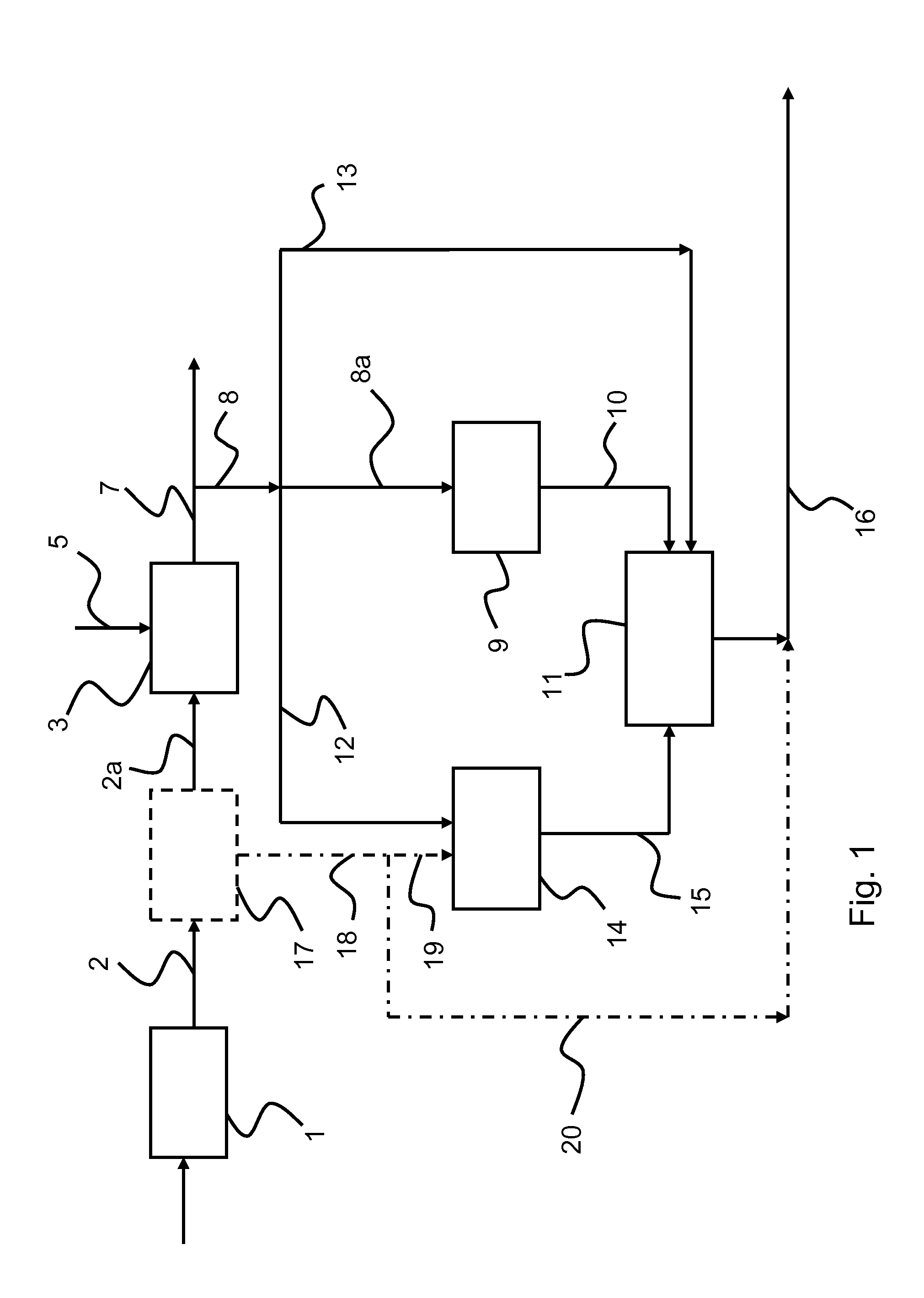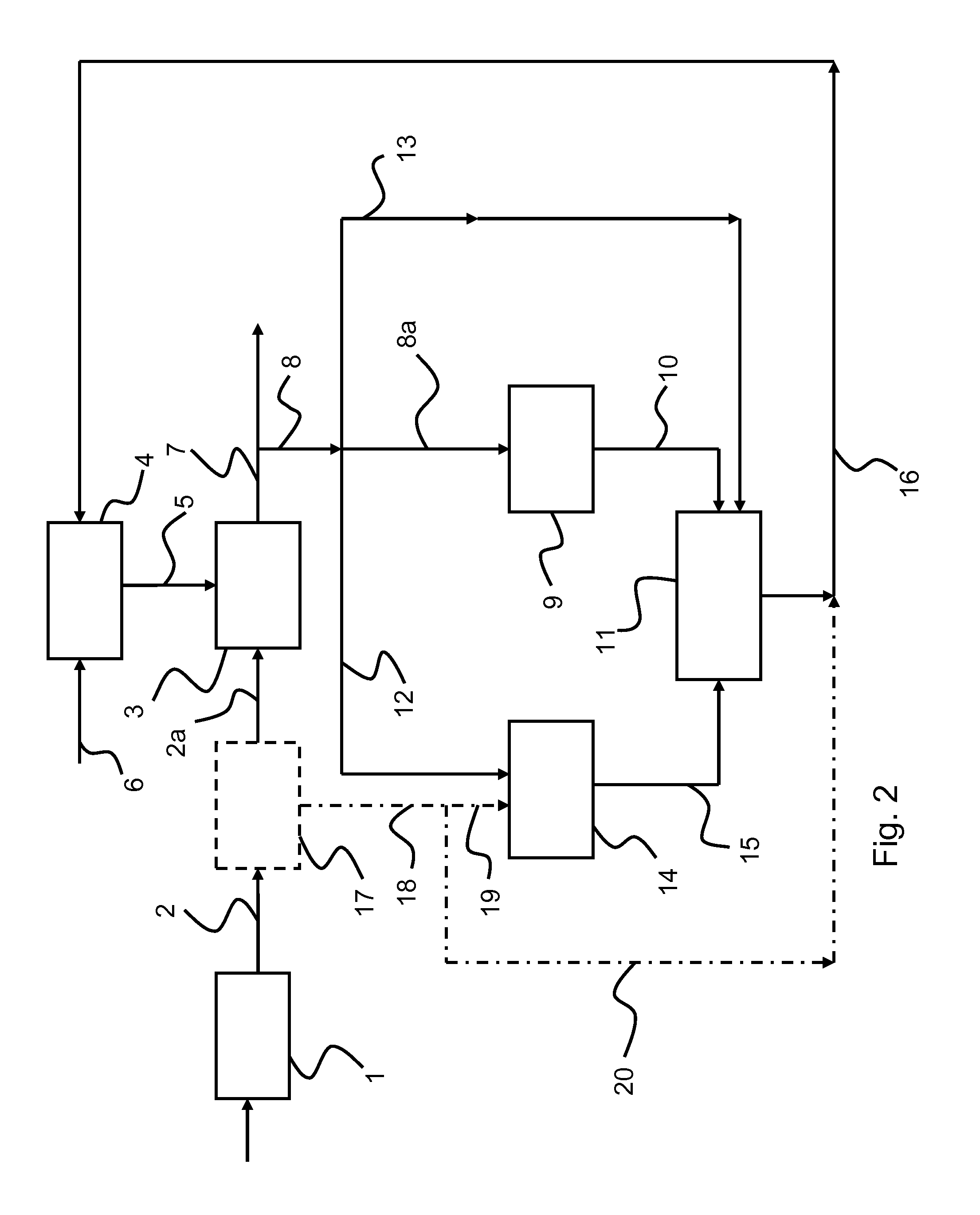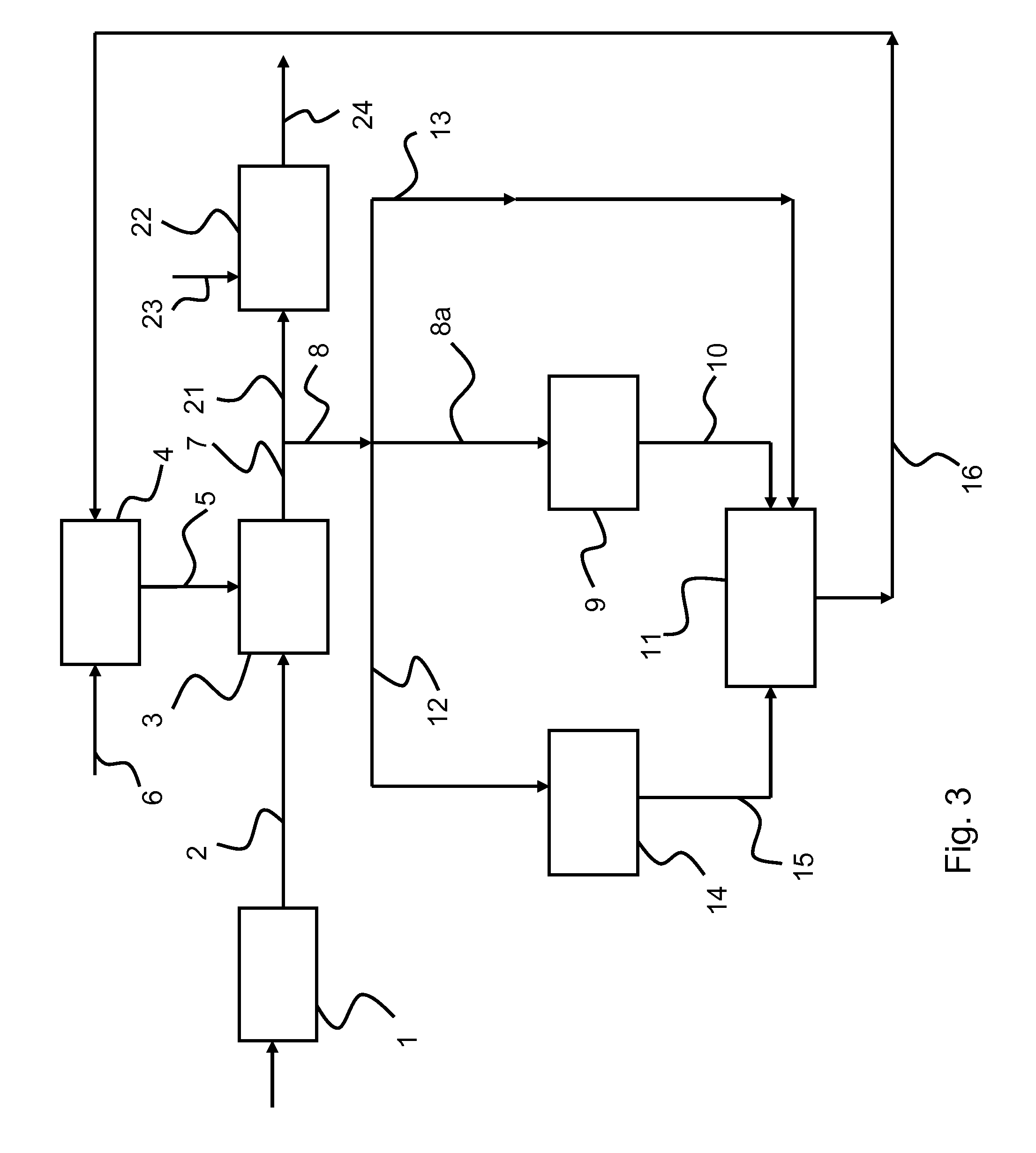Process for the production of oligosaccharides from lignocellulosic biomass
a technology of lignocellulosic biomass and oligosaccharides, which is applied in the direction of biochemical apparatus and processes, enzymes, biofuels, etc., can solve the problems of cellulose extraction and transformation, step difficulty, and insufficient utilization of cellulose and its derivatives
- Summary
- Abstract
- Description
- Claims
- Application Information
AI Technical Summary
Benefits of technology
Problems solved by technology
Method used
Image
Examples
example 1
Not in Accordance
[0103]An enzymatic hydrolysis of straw pre-treated by acid digestion was carried out in a medium comprising 15% by weight of DM (15 g dry matter of straw per 100 g of total mass) using a cocktail of cellulases produced by Trichoderma reesei. The quantity of cellulases used for the hydrolysis was fixed at 10 mg of cellulases per gram of dry matter (DM). The mixture was hydrolysed at a temperature of 50° C., with stirring for 72 hours. At the end of the hydrolysis, a crude hydrolysate was recovered which had a glucose concentration of 75 g / L, and a β-glucosidase activity of 10 IU / mL. Furthermore, the liquid fraction had a water content of 92% by weight with respect to the weight of the liquid fraction.
[0104]The crude hydrolysate was then incubated for 24 hours at 50° C., with stirring. At the end of the incubation phase, the hydrolysate was boiled for 5 minutes in order to denature the enzymes, then analysed by HPLC. The analysis indicated that the hydrolysate did not...
example 2
In Accordance with the Invention
[0106]The crude hydrolysate obtained in Example 1 was supplemented with a 60% by weight glucose syrup in order to obtain a liquid fraction with a concentration of glucose of 500 g / L and a water content of 57.5% by weight of water with respect to the total weight of the liquid hydrolysate fraction. The mixture was incubated for 24 hours at 50° C., with stirring. At the end of the incubation phase, the mixture was boiled for 5 minutes in order to denature the enzymes, then analysed by HPLC. The hydrolysate obtained contained 22 g / L of a mixture of sophorose and gentiobiose and 477 g / L of glucose (i.e. 4.4% conversion of glucose into oligosaccharides).
example 3
In Accordance with the Invention
[0107]The crude hydrolysate obtained in Example 1 was filtered using a filter with a porosity of 100 μm in order to separate:[0108]a liquid fraction containing 12% by weight of dry matter (DM);[0109]a solid fraction containing 35% by weight of dry matter (DM).
[0110]The liquid fraction contained 75 g / L of glucose and had a β-glucosidase activity of 6 IU / mL and a water content of approximately 90% by weight.
[0111]The liquid fraction was then supplemented with a 60% by weight glucose syrup in order to obtain a liquid fraction with a concentration of glucose of 500 g / L and a water content of 57.5% by weight. The mixture was incubated for 24 hours at 50° C., with stirring. At the end of the incubation phase, the mixture was boiled for 5 minutes in order to denature the enzymes, then analysed by HPLC. The analysis indicated that the hydrolysate obtained contained approximately 11 g / L of a mixture of sophorose and gentiobiose and 488 g / L of glucose (i.e. 2.2...
PUM
| Property | Measurement | Unit |
|---|---|---|
| Temperature | aaaaa | aaaaa |
| Temperature | aaaaa | aaaaa |
| Temperature | aaaaa | aaaaa |
Abstract
Description
Claims
Application Information
 Login to View More
Login to View More - R&D
- Intellectual Property
- Life Sciences
- Materials
- Tech Scout
- Unparalleled Data Quality
- Higher Quality Content
- 60% Fewer Hallucinations
Browse by: Latest US Patents, China's latest patents, Technical Efficacy Thesaurus, Application Domain, Technology Topic, Popular Technical Reports.
© 2025 PatSnap. All rights reserved.Legal|Privacy policy|Modern Slavery Act Transparency Statement|Sitemap|About US| Contact US: help@patsnap.com



